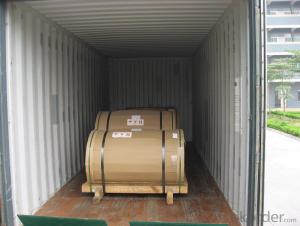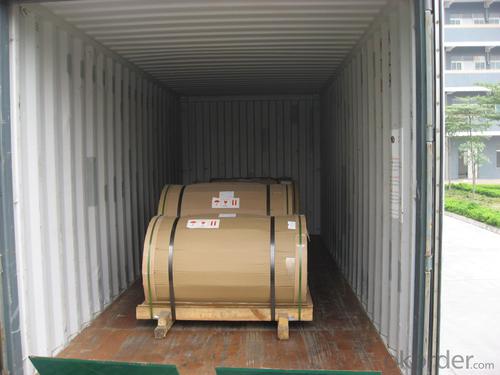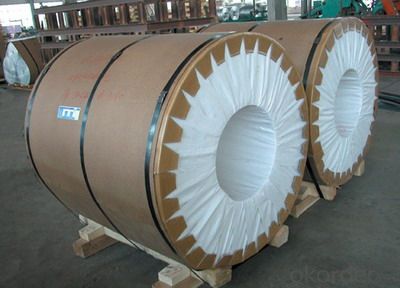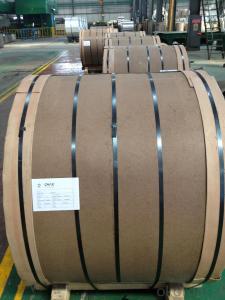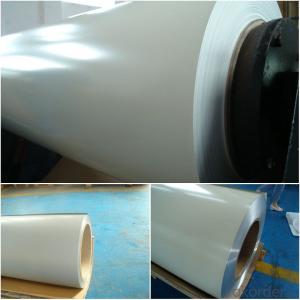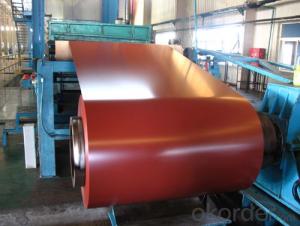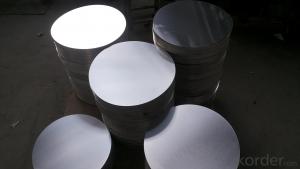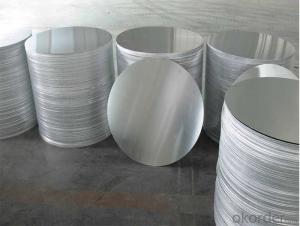Alberta Canada Continuous Casting Aluminum Coils for Color Coated Polyester Sheets
- Loading Port:
- Shanghai
- Payment Terms:
- TT OR LC
- Min Order Qty:
- 2 m.t.
- Supply Capability:
- 20000 m.t./month
OKorder Service Pledge
OKorder Financial Service
You Might Also Like
Specification
1.Structure of Continuous Casting Aluminium Coils for Color Coated Polyester
Continuous Casting Aluminium Coils for Color Coated Polyester is one semi-finished aluminium material. This strip can be rolled down to aluminium coil,sheet,circle ect. The alloy AA1050 is widly used in building, industry ect. Its weight is much lower than steel. So many customers choosed aluminium material instead of steel.
2. Main features of Continuous Casting Aluminium Coils for Color Coated Polyester
a.Competitive price---We have our own mills and can produce mill finished aluminium coils, so we can control the production cost better.
b.Professional after-sale service---We have more than 15 years exportation experience and you need not worry about the exporation problems.
c.Fast delivery time---We can control the delivery time within 35 days.
3. Image of Continuous Casting Aluminium Coils for Color Coated Polyester
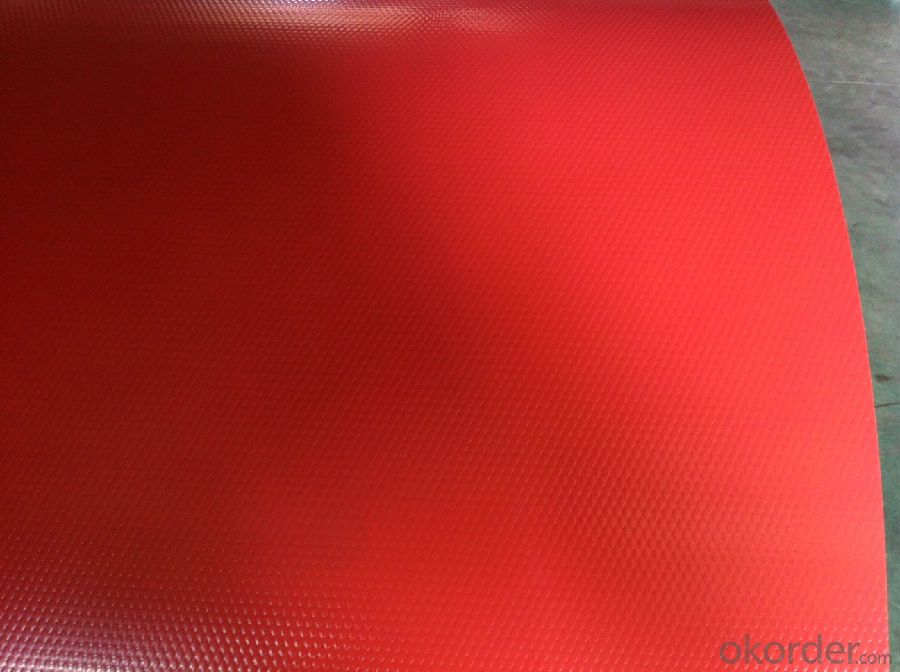
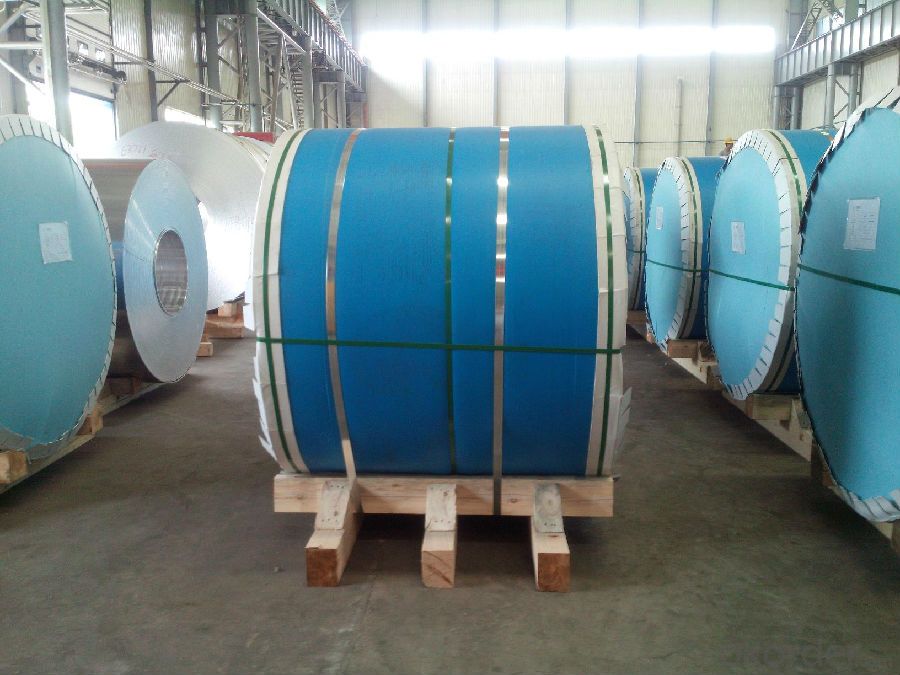
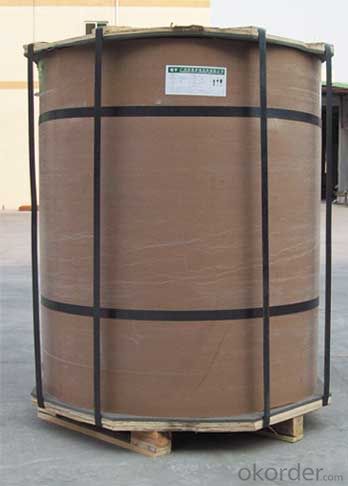
4. Product Specification of Continuous Casting Aluminium Coils for Color Coated Polyester
| Alloy | Temper | Style | Thickness | Width |
| AA1100 | H14 | Continuous Casting | 0.2mm-3mm | 1000mm-1500mm |
5.FAQ of Continuous Casting Aluminium Coils for Color Coated Polyester
What is the quality standard?
---Usually our standard is GB3880-2006
What is the largest width?
---It is 2300mm
What is the MOQ?
---Usually we can accept 80 tons.
- Q: why is it gd and what are common aluminium compounds??? thx
- Where aluminium is the third most common element on the planet (after oxygen and hydrogen), it is also the most used element on the planet, everything from pull tabs on soda cans to girders used in construction. Car parts, dog tags, pots and pans, it is everywhere. 95% of aluminium survives recycling, so when you recycle 1,000 can's (or return for deposit in 13 states), it is back on the shelves in the form of 950 new cans in just 6 weeks. As aluminium is a very difficult metal to seprate from other ores such as bauxite, recycling both protects the enviroment by slowing mining, and stabelizing the economy. Its not just a win-win, it can also be quite profitable even with the current low prices for aluminium on the markets.
- Q: Can aluminum be either conductive or magnitized?
- Aluminum can be conductive but not magnetized. In fact it has the ability to be a superconductor. But based on the electron spin in the last orbital it makes it Paramagnet. which means that it alone is not magnetic, but it will conform and be attracted to other magnetic fields. note that Al has such a low Paramagnetism that it will not be detectable with out sensitive equipment.
- Q: What are the different fabrication methods used for aluminum sheets?
- There are several different fabrication methods used for aluminum sheets, each with its own advantages and applications. Some of the most common methods include rolling, extrusion, casting, and stamping. Rolling is the most commonly used method and involves passing the aluminum through a series of rollers to reduce its thickness and create a flat sheet. This method allows for precise control over the thickness and shape of the sheet, making it ideal for a wide range of applications, from packaging to building materials. Extrusion is another popular method where heated aluminum is forced through a die to create a specific shape or profile. This method is commonly used for creating complex shapes such as tubes, rods, and channels. Extruded aluminum sheets offer high strength and durability, making them suitable for structural applications in industries like construction and automotive. Casting involves pouring molten aluminum into a mold and allowing it to solidify. This method is often used for creating intricate and detailed shapes that cannot be easily achieved through other methods. Casting can produce aluminum sheets with unique textures and designs, making them popular in decorative applications. Stamping is a method that uses a press to shape the aluminum sheet by applying pressure and forming it into a desired shape. This technique is commonly used for creating small, precise parts like brackets, connectors, and electrical components. Stamped aluminum sheets offer excellent dimensional accuracy and can be produced in high volumes at a relatively low cost. In addition to these methods, other fabrication techniques such as welding, bending, and laser cutting can be used to further process aluminum sheets and create custom shapes and designs. Overall, the choice of fabrication method for aluminum sheets depends on the desired application, required properties, and complexity of the desired shape. Each method offers unique advantages and capabilities, allowing for a wide range of possibilities in terms of aluminum sheet fabrication.
- Q: Can aluminum sheet be bent or formed into different shapes?
- Indeed, aluminum sheet possesses the capacity to be effortlessly bent or molded into diverse forms. As a remarkably ductile metal, aluminum can be bent, shaped, or molded without any risk of cracking or fracturing. This characteristic renders it a perfect selection for a wide array of applications where adaptability and customization are essential. Multiple techniques, including the utilization of a brake press, roll forming, or specialized bending tools, can be employed to bend aluminum sheets. The degree of bendability may vary based on the thickness and grade of the aluminum sheet. Nevertheless, in general, aluminum is renowned for its exceptional malleability and aptitude to assume various configurations.
- Q: This question asks for the current market price of aluminum sheets.
- <p>The price of aluminum sheets in the market can vary significantly based on factors such as grade, thickness, quantity, and market demand. As of my last update, the price per ton of aluminum was fluctuating around $2,000 to $3,000 USD, but this is subject to change. For the most accurate and up-to-date pricing, it's best to check with suppliers or commodity exchanges, as prices can shift daily due to global economic conditions and supply chain dynamics.</p>
- Q: I would like to make a boat, Songhua River used to know, tell the answer, good + points!
- Marine yacht with 5083, with 5456 of inland water on it, domestic Park boat 5052 will be used
- Q: What are the common thicknesses of aluminum sheets used in aerospace applications?
- Aluminum sheets are commonly utilized in aerospace applications because of their lightweight and high strength properties. The thickness of these sheets can vary based on the specific needs of the fabricated component or structure. Aluminum sheets in aerospace applications typically have thicknesses ranging from 0.016 inches (0.4 mm) to 0.25 inches (6.35 mm). These thicknesses are chosen considering factors such as the desired strength-to-weight ratio, structural integrity, and the specific application or component being manufactured. Thinner aluminum sheets, with a thickness of 0.016 to 0.040 inches, are frequently used for lightweight structures, interior components, and non-critical parts. These thin sheets provide the necessary strength while keeping weight at a minimum. Thicker aluminum sheets are employed for more structural components. Typically, thicknesses between 0.040 and 0.125 inches are utilized for structural elements like floor panels, bulkheads, and wing ribs. These sheets offer enhanced strength and rigidity to support the aircraft's weight and handle the stresses experienced during flight. In certain cases, even thicker aluminum sheets ranging from 0.125 to 0.25 inches may be employed for heavy-duty structural components or areas requiring additional strength. These thicker sheets are used for critical parts like landing gear components, wing spars, and engine mounts to ensure the necessary structural integrity and load-bearing capability. It is important to note that these thickness ranges are general and may vary depending on the aircraft type, design specifications, and the specific application within the aerospace industry.
- Q: Can 101 aluminum sheets be used in the production of sporting goods?
- Yes, 101 aluminum sheets can be used in the production of sporting goods. Aluminum is a versatile material that offers several benefits for sporting equipment. It is lightweight, which is crucial for many sports equipment like bicycles, tennis rackets, and baseball bats, as it allows for easier handling and maneuverability. Additionally, aluminum is corrosion-resistant, ensuring the longevity of the sporting goods even when exposed to various weather conditions. It also provides excellent strength-to-weight ratio, making it suitable for high-performance equipment that requires durability without adding unnecessary weight. Therefore, 101 aluminum sheets can be a viable choice for manufacturing various sporting goods, providing the desired properties needed for performance, longevity, and user experience.
- Q: This question asks for the duration aluminum sheets can last and how their lifespan compares to other materials.
- <p>The lifespan of aluminum sheets can vary depending on the environment and usage, but generally, they can last for several decades with proper care and maintenance. Aluminum's resistance to corrosion and weathering makes it a durable choice. Compared to other materials, aluminum is more durable than wood and many plastics, but it may not last as long as some high-quality stainless steels or certain types of stone. It's also lighter than steel, making it a popular choice for construction and manufacturing applications where weight is a concern.</p>
- Q: What are the different types of alloys used in aluminum sheets?
- There are several types of alloys used in aluminum sheets, including 1100, 3003, 5052, and 6061. These alloys have different properties and are chosen based on the specific application and desired characteristics of the aluminum sheet.
Send your message to us
Alberta Canada Continuous Casting Aluminum Coils for Color Coated Polyester Sheets
- Loading Port:
- Shanghai
- Payment Terms:
- TT OR LC
- Min Order Qty:
- 2 m.t.
- Supply Capability:
- 20000 m.t./month
OKorder Service Pledge
OKorder Financial Service
Similar products
Hot products
Hot Searches
Related keywords
